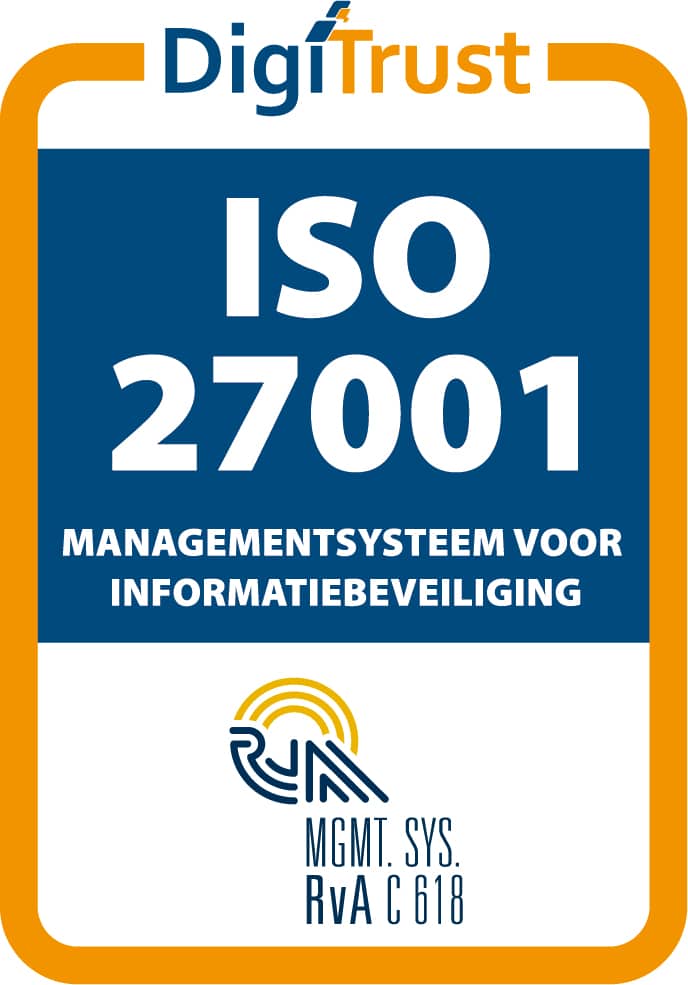Report Legal IT Talk: Digital identification and signing
20 May 2021
Thursday, May 6, another Legal IT Talk of the Lexxyn Group took place, this time on digital signing and identification. Guests were Taco van Bennekom, Consultant at NEXTlegal, and Patrick Terranea, Product and Business Development at Zynyo.

The digital identification and signing of documents is largely about being able to validate the identity of the signer and the authenticity of the signature. This guarantees the legal validity of the document. Taco: "We believe that this whole process should be as simple as possible for the lawyer or notary, so we started offering this in our software. All kinds of documents can now be signed digitally, without the client having to come to the office. At the moment, these are mainly private agreements, but from August onwards, the legislator is expected to make it possible for a civil-law notary to digitally incorporate a private company.
Patrick hooks up with that: "We started connecting our signing service to NEXTlegal's software some time ago. As a result, you can now sign on all compliant eIDAS regulation valid signing methods, at all security levels, have a piece digitally signed from NEXTlegal's software."
What is possible and what is not?
The fact that a lot is already possible in terms of digital signing does not mean that everything is allowed. For certain documents, such as the aforementioned incorporation of a private limited company, there is not yet a legal basis for arranging this digitally. Taco: "For the incorporation of a B, for example, some extra things need to be thought about, such as the Belehrung that a notary has to do. The legislation still has to be made suitable for that, and that is now up for consultation with politicians. But in addition to that you also have the "ordinary" documents: a declaration, an agreement, a contract. The legislation is already in place for that and it is already being applied in practice."
So there are certainly applications for both the legal and notarial professions, but once the legal frameworks are in place, the notarial deed seems to become the icing on the cake. Taco continues: "For both professions, the process is similar. You create the document, and regardless of the type of document, you go through the same steps to send it to the signatories."
Levels of signing
Different levels and forms of identification are possible. For example, it differs whether someone wants to sign a document as a consumer, or on behalf of an organization. Patrick: "There are indeed different types of certificates for consumers and organizations, but the process is the same. In doing so, it is important to go through the different types and levels of signing for a while.
I already mentioned the eIDAS Regulation. It names three levels of signature: ordinary, advanced and qualified. The ordinary and the advanced signature, are currently most used in business to business. Qualified signing with a personal PKI certificate (Burgercertificaat), is suitable to sign as a business person, or as a consumer. Lawyers and notaries already know the professional certificates: these are also PKI certificates, but specifically for their role. And consumers can now also obtain their own PKI certificate to sign digitally at the highest level - eIDAS HIGH."
PKI certificate
Obtaining such a PKI certificate is therefore necessary for the client if he/she wants to digitally sign a document at the highest level. Patrick: "The client must register and identify himself at an agency that is allowed to issue PKI certificates. In our case that is Cleverbase, where that whole process can be done online and free of charge for the client. He/she then receives, after that process is completed, the personal PKI certificate that allows documents to be signed at the highest level. This certificate is valid for three years. We also help firms get their clients onboarded who need to sign documents digitally for the first time.
Demonstration
During a demonstration of digital signing, Taco and Patrick together show how a digital signature is created . It shows how to send the document from the software package to the client, the signing using a PKI certificate, and how the signed documents are placed back in the correct file. Patrick also demonstrates how the content of the piece can be validated by all signatories To prevent forgery or subsequent changes. For this purpose, a digital seal and an audit trail are attached to the signed piece, among other things.
Finally, Patrick demonstrates How a client can obtain a personal PKI certificate free of charge. This involves an identification process via an app, in which a registration officer from an entity authorized to issue PKI certificates (in this case, Cleverbase) identifies the client, and then provides the PKI certificate.
Finally, the Q&A asks a question about digital identification and signing. On this, DNB published a clarification on the possibilities of digital identification and signing in April 2021. Here it states that the eIDAS legislation can simply be followed and the levels substantial and high are accepted as valid identifiers: https://zynyo.com/blog-nieuws/online-identificatie-dnb/
Want to know more about digital identification and signing? Then please contact Taco van Bennekom (NEXTlegal) or Patrick Terranea (ZYNYO).
Watch the entire recording of the webinar here:
